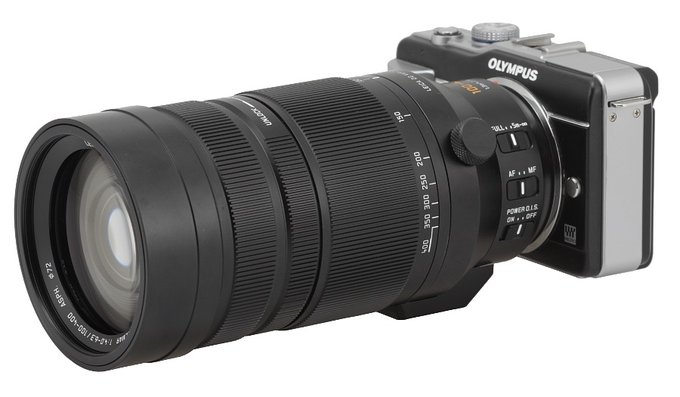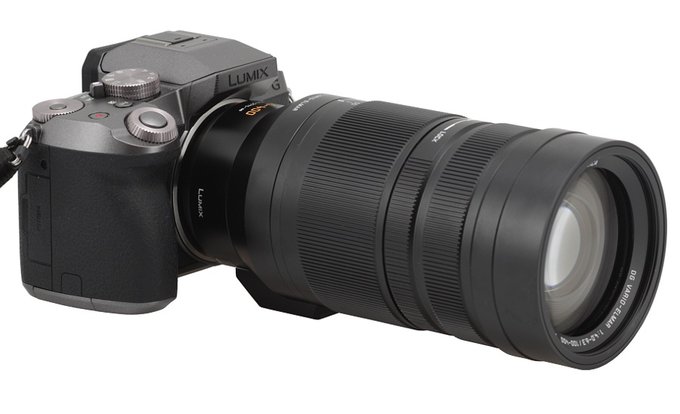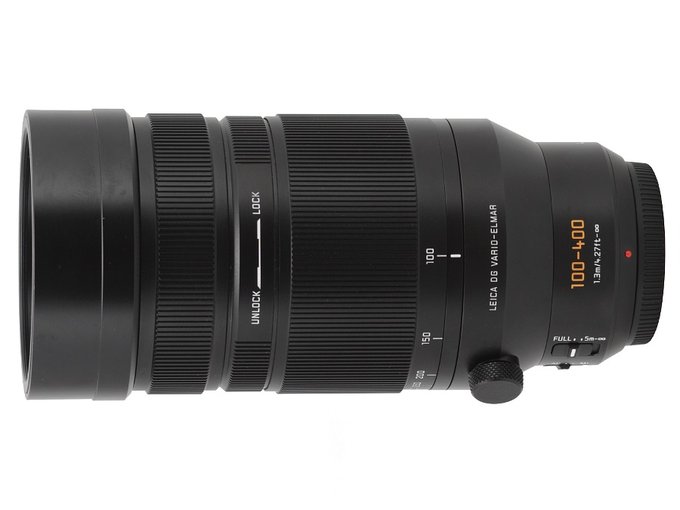Panasonic Leica DG Vario-Elmar 100-400 mm f/4.0-6.3 ASPH. POWER O.I.S.
1. Introduction
One glance at the parameters of the Panaleica 100-400 mm and you know the producer, contrary to popular expectations, decided to take a step in a different direction. Usually systems based on smaller sensors offer you lenses faster than those designed for full frame because such are the demands of the market. Here on the contrary - you get f/6.3 while most of full frame 100-400 mm devices feature f/5.6 aperture at the longest focal length. Instead of the superior aperture fastness you are offered an instrument with really compact dimensions.
I don’t doubt that move of the Panasonic and Leica companies was completely premeditated. Of course you can expect faster lenses if they are designed for smaller sensors but in the case of telephoto devices you are limited by laws of physics. If the tested lens was as fast as f/4.0 at 400 mm perhaps everybody would be happier but its front element would have to have about 10 cm in diameter. In that case you would deal with a completely stationary telephoto lens which would demand at least a monopod or a tripod, not a lightweight instrument easy to carry around.
Please Support UsIf you enjoy our reviews and articles, and you want us to continue our work please, support our website by donating through PayPal. The funds are going to be used for paying our editorial team, renting servers, and equipping our testing studio; only that way we will be able to continue providing you interesting content for free. |
- - - - - - - - - - - - - - - - - - - - - - - - - - - - - - - - - - - - - - - - - - - - - - - -
The producer was fully aware that they cannot afford a faster construction so they manufactured something slightly slower but with really compact design which might tempt many potential customers.
There’s a proverb saying that any strategy cuts both ways. It is perfectly right. As you deal here with a zoom lens it will need stopping down by about 1-1.5 EV at the maximum focal length in order to “cut out” most of optical aberrations. It means a necessity to close the lens to f/9-11 apertures. In the case of a small Micro 4/3 sensor with a resolution of 16 millions of pixels the diffraction limits resolution in a significant way by those aperture values so the lens simply lacks space to spread its wings. I don’t have to test it thoroughly in order to know that it will be a huge success if at 400 mm the lens is able to produce images of barely decent quality. The laws of physics won’t allow it to exceed that for sure…
Of course the fans of the Micro 4/3 system can say at once that, after all, you deal here not with a 100-400 mm lens but an equivalent of a 200-800 mm device which cannot be found among full frame instruments. They are right but only up to a point. Of course if you attach a 100-400 mm class instrument to a full frame camera or a body with an APS-C/DX sensor you can always crop an area being an equivalent of the dimensions of 4/3 . What’s more the sensors of many contemporary reflex cameras are so densely packed that it would be actually a well-grounded thing to do. Still will their resolution outperform that of the Micro 4/3 system? It’s easy to answer that question by checking tests of appropriate cameras. For example the full frame Canon EOS 5Ds R is able to reach as high as almost 80 lpmm. The best APS-C/DX reflex cameras with 24 Mpix sensors get near to 85 lpmm. It is a lot but still a bit less than the results you can squeeze from the Micro 4/3 sensors as in their case at 16 Mpix the resolution values are hovering near 90 lpmm and at 20 Mpix they are close to 95 lpmm.
Before you announce the crushing victory of Micro 4/3 fans you have to remember that the results presented above are maximum achievements you get with the best prime lenses, employing f/4.0 aperture. You won’t be able to compare them to the results at the longer end of the focal range of the Panaleica 100-400 mm. In fact you can say that attaching e.g. the Canon EF 100–400L II to the EOS 5Ds R or to the EOS 80D and cropping the photos to the size of the Micro 4/3 sensor you’ll get very similar resolution results to those of the Panasonic, tested here. Is there any profit? Well, in order to answer that question it’s enough to consider the physical dimensions of the lens.
Well…after such a lengthy introduction it seems I don’t have to test the lens at all but let’s get serious – in the following chapters we are going to assess precisely the performance of the Panasonic Leica DG Vario-Elmar 100–400 mm f/4.0–6.3 ASPH. POWER O.I.S. in all its aspects.
We would like to thank the Polish subsidiary of the Panasonic company for lending us the lens for testing purposes.
You are also invited to get acquainted with our test procedure, described in the article "How do we test lenses?" If you feel it’s still not enough, please go to our FAQ section where you can find some further explanation.
 |
 |







